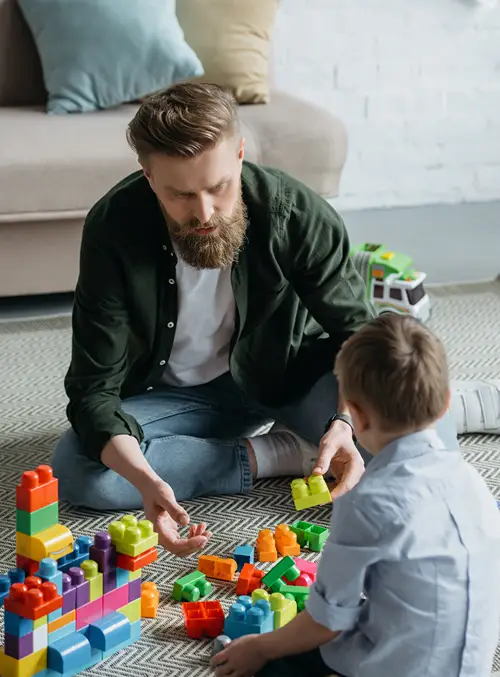How Positive Reinforcement Shapes Better Behavior in Children
Every parent dreams of raising a child who listens, shares, and shows kindness without constant reminders. But as most caregivers know, good behavior doesn’t happen overnight. It is attained through consistent guidance and encouragement.
That’s where positive reinforcement parenting comes in. It’s a simple, effective approach that helps children build good habits by celebrating what they do well.
Turning Everyday Moments into Teachable Opportunities
Positive reinforcement focuses on recognizing and rewarding desirable behavior therefore it happens more often. Instead of emphasizing punishment, this approach encourages children to repeat actions that bring positive results. It’s not about “spoiling” your child with rewards or praises, it’s about teaching them that good choices bring good outcomes.
This technique, widely used in Applied Behavior Analysis (ABA) therapy. It helps children develop social, emotional, and behavioral skills that last longer. Whether your goal is smoother mornings, fewer tantrums, or better homework habits, positive reinforcement can be a game-changer at home.
Core Principles of Positive Reinforcement Parenting
1. Catch Good Behavior Early and Often
Children crave attention and they’ll seek it in any form they could attain. If parents only respond to misbehavior, kids quickly learn that acting out is the best way to be noticed. Then, Positive reinforcement flips that script.
When you notice your child sharing a toy, using kind words, or starting homework without being asked, praise them immediately. A simple, “I love how you’re taking turns with your sister!” reinforces the idea that good actions earn positive attention.
2. Be Specific with Praise
Generic compliments like “Good job!” are nice, but specific feedback helps children understand exactly what they did right. Try:
- “I’m proud of how you waited for your turn patiently.”
- “Great job doing your homework without reminders.”
- “You cleaned up your mess all by yourself! – wow responsible act”
- “Thank you for following directions the first time.”
- “You did a great job putting your dirty clothes in laundry bag”
Specific praise helps kids connect the dots between their behavior and your approval, making it more likely they’ll repeat the action.
3. Consistency Builds Habits
Consistency is the backbone of behavior management for kids. When reinforcement is predictable, children learn faster. If sometimes you praise a behavior and other times you ignore it, your child may feel confused.
Keep expectations clear and consequences (positive or negative) consistent. For example, if your child earns a sticker for brushing their teeth without reminders, stick to that plan daily. Over time, brushing will become part of their normal routine even without a reward.
4. Timing Is Everything
If your child completes their homework before dinner, acknowledge it right away rather than hours later. The quicker the response, the stronger the connection between effort and reward.
Reinforcement works best when it happens right after the desired behavior. Immediate feedback helps children associate their actions with the reward.
5. Mix Praise with Natural Rewards
Not every positive action needs a physical reward. In fact, the most effective reinforcement often comes from natural rewards like extra playtime, a fun activity, or simply feeling proud of their accomplishment.
Still, for younger children, small tangible rewards (extra play time, stickers, tokens, or a special treat) can be powerful motivators. Over time, you can fade these out as intrinsic motivation grows.
Practical Examples of Positive Reinforcement at Home
1. Encouraging Cooperation
When your child follows directions like cleaning up toys or setting their things correctly, praise them or reward them immediately. You might say, “You followed directions so well, thank you for helping!”.
2. Reinforcing Sharing and Kindness
If your child shares a toy or helps a sibling, point it out and offer positive attention:
“Wow, you shared your pencils without me asking, that was too kind!”
This teaches that kindness and cooperation bring emotional rewards, such as appreciation and connection.
3. Promoting Independence
Positive reinforcement can encourage self-care skills like getting dressed or completing homework. Try using a visual chart with stickers for each task completed independently. Celebrate small wins and remind your child they are capable enough.
4. Reducing Challenging Behaviors
Instead of reacting to unwanted behaviors with punishment, focus on teaching what to do instead. For instance, if your child tends to shout when upset, praise calm communication:
“I love how you used your words instead of yelling, that’s great problem-solving!”
Gradually, your child learns that calm behavior brings more positive attention than outbursts or yelling.
How ABA Therapy Principles Enhance Positive Parenting
Applied Behavior Analysis (ABA) therapy is an evidence-based approach that helps children learn and strengthen positive behaviors. While it’s often used to support children with developmental differences like autism, its core principles apply to all children.
In ABA, therapists use reinforcement, consistency, and data-driven strategies to teach skills and reduce challenging behaviors. Parents can apply these same methods at home, on an everyday scale.
For example:
- ABA emphasizes breaking big goals into small, achievable steps. A strategy parents can use to teach routines like getting ready for school.
- It focuses on rewarding progress, not perfection. Helping children feel proud of trying, even when they’re still learning.
- ABA teaches replacement behaviors, guiding children to express needs in healthy ways rather than acting out.
When parents understand and use these ABA-inspired strategies, home life becomes calmer, communication improves, and children gain confidence in their ability to succeed independently.
The Power of Patience and Empathy
Positive reinforcement isn’t about instant results, it’s about shaping behavior through trust, consistency, and genuine connection. Mistakes will happen (for both kids and parents), but everyday day offers new chances to guide with encouragement and empathy.
Children shine in environments where they feel seen, valued, and supported. With patience, your consistent reinforcement, they learn that good choices truly pay off.
Building Better Behavior, One Praise at a Time
Parenting with positive reinforcement transforms everyday challenges into teachable moments. By focusing on what your child does right and rewarding those moments, you set the stage for lifelong emotional growth, cooperation, and self-confidence.
If you’re interested in learning how structured, evidence-based methods can help your child thrive, explore how ABA therapy can make a difference. With professional guidance, you can build a personalized therapy plan that reinforces your child’s strengths and nurtures positive behavior at every stage of life.









